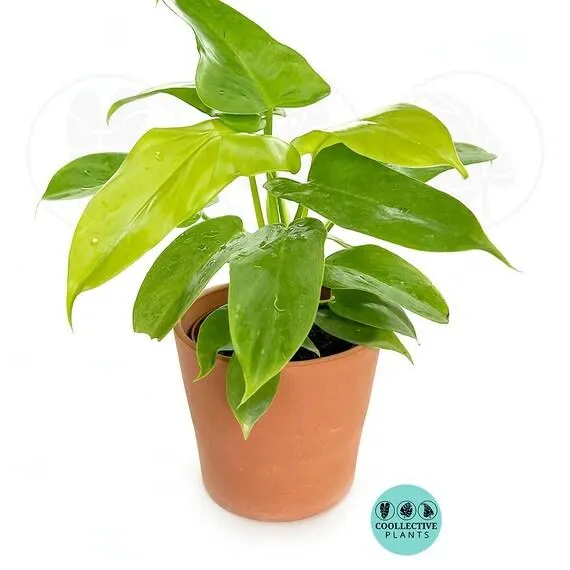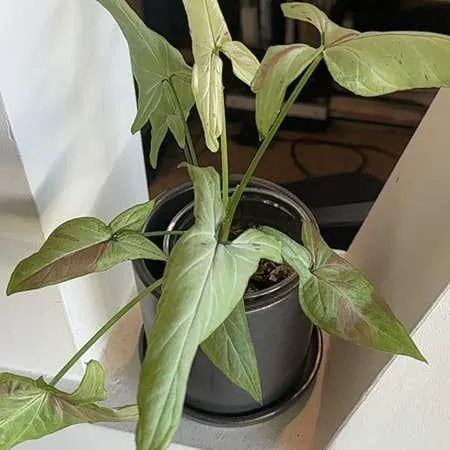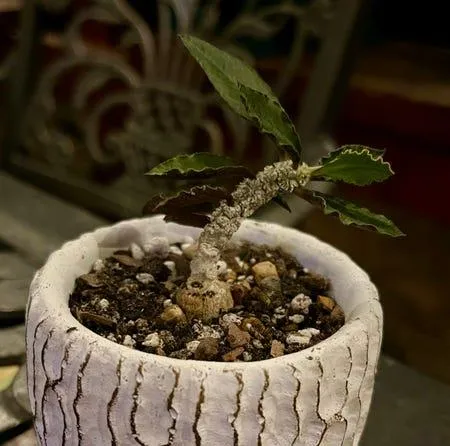Understanding the Mystery of the Ghost Monstera
If you’ve come across the term “ghost monstera” in your plant research, you’re probably curious to learn more about this unusual variety. In this article, I’ll explain what defines a ghost monstera and address some of the main questions users searching this term may have.
What is a Ghost Monstera?
A ghost monstera, or Monstera deliciosa ‘Albo-variegata’, is a variegated cultivar of the popular Swiss cheese plant (Monstera deliciosa). Variegation refers to color patterns in leaves caused by mutations in chloroplast production. In ghost monsteras, portions of their leaves lack chlorophyll, giving them a white or light green appearance rather than the deep green of regular monstera leaves.
This lack of chlorophyll is what earns them the “ghost” name – their leaves resemble ghosts with their pale coloring. The white or light green sections are beautifully contrasted against the normal green, creating leaves that are one of nature’s own works of art!
Are Ghost Monstera Leaves Edible?
While the fruits of a regular monstera plant (sometimes called a “pinecone”) can be eaten when ripe, the variegated leaves of a ghost monstera lack sufficient chlorophyll to be considered edible. The white or light green sections would not provide much nutritional value. So unlike their green counterparts, ghost monstera leaves are best left uneaten!

Are Ghost Monsteras Rare?
Yes, ghost monsteras are quite rare in cultivation. Variegated plants occur infrequently in nature as mutations. It takes several rounds of careful cloning and propagation for nurseries to produce them in larger quantities. Their beautiful foliage also makes them a highly coveted collector’s plant. All of these factors contribute to their relative scarcity.
However, as interest and demand for variegated houseplants continues to grow, more commercial growers are working towards steady reproduction of top variegated cultivars like the ghost monstera. With time and effort, they may become slightly less uncommon. But their natural rarity ensures ghost monsteras will always remain a fairly exclusive plant.
Challenges of Growing Ghost Monsteras
While gorgeous, ghost monsteras require a bit more finesse to cultivate than their green siblings. Here are a few of the main challenges owners may face:
- Susceptibility to sunlight burn:
The white/light green portions of leaves are highly sensitive to direct sun exposure and can scorch easily. Indirect or lightly filtered sunlight is best. - Slower growth rate:
The lack of full chlorophyll means these plants photosynthesize less efficiently. Expect slower leaf production and overall growth compared to all-green monsteras. - Propensity for mutating:
It’s common for variegation patterns to mutate or revert back to solid green with successive generations. Careful propagating is key to maintain the coveted variegation. - Pruning of non-variegated growth:
It’s not uncommon for reversion spots or sections of all-green growth to emerge. These portions should be pruned to encourage the plant to put energy into variegated growth.
With the right care and growing conditions, ghost monsteras can thrive. But their sensitive nature means they may require extra TLC compared to hardier houseplants.

Prized Variegation Comes at a Price
Here’s where rarity and demand meet – ghost monsteras typically hold a pretty penny. Prices will vary depending on the plant’s size and fullness of variegation. However, it’s pretty standard to see smaller 4-6″ pots listed from $100-$300 or more online. Established specimens with fuller foliage can easily fetch $500 or higher.
The combination of rarity, desirability, and challenges in maintaining stable variegation all contribute to ghost monstera’s luxury plant status. For the serious collector, their ethereal leaves may be worth splurging on. But for just wanting to try out Monsteras, a basic Deliciousa may be a more budget-friendly entry point while variegated cultivars become more available in the future.
Admiring From Afar
If shelling out hundreds for a plant seems totally bonkers – I feel you! Ghost monsteras are so exceptionally beautiful, I can understand the inclination to simply view them like works of art. Several public gardens showcase prized specimens that anyone can enjoy taking in for free, like the Smithsonian horticulture collection in DC. So fear not if you can’t snag your own – chances remain to still ogle their ethereal foliage from a distance!
Hope this gives you a better idea of what makes ghost monsteras so mystifying – both literally with their pale foliage, and figuratively with their ornate rarity. While not always accessible to the casual plant parent, their delicate beauty is what makes them an object of intrigue. Even just learning more about their peculiar qualities can be fun. Feel free to explore more, and happy cultivating – be it ghost monstera or more hardy leafy friends!

Ghost Monstera Care Factors
| Factor | Details |
|---|---|
| Light | Prefers bright, indirect light. Too much direct sun can burn leaves. |
| Water | Allow soil to dry out between waterings. Water thoroughly when top inch of soil is dry. |
| Humidity | Prefers high humidity between 50-60%. Mist leaves frequently or use pebble trays. |
| Soil | Loose, well-draining soil such as potting mix. Does not like to be soggy. |
| Fertilizer | Feed monthly in spring and summer with diluted liquid fertilizer. |
FAQ
-
What sort of plant is a ghost monstera?
Basically, a ghost monstera is a type of aroid plant. Its scientific name is Rhapidophora tetrasperma. It is often mistakenly called a white or albino monstera deliciosa due to its similar leaf shape. However, it is really its own unique species.
-
What do their leaves look like?
Ghost monstera leaves are sort of like monstera deliciosa leaves – they are large, vaguely heart-shaped and split – but instead of being dark green, their leaves are very pale, almost white in color. Some think their white leaves look spooky, like a “ghost” plant!
-
How fast do they grow?
These plants can grow quite fast when cared for properly. Their growth rate depends on factors like light, fertilizer, and moisture. At the same time, a mature plant can easily put out new leaves every week or two during the growing season. So their curious white leaves end up kind of taking over the area pretty quickly!
-
Are they difficult to care for?
Ghost monsteras are not too fussy but do require some particular care. They like humidity around 50% and moist soil. Their large, twisting aerial roots should not be submerged in water like a monstera. Maybe the trickiest part is providing the right amount of light – too much and their leaves will burn, too little and they won’t thrive. Taking care of the lighting seems to be the main challenge for most.

-
Do they flower?
Yup, in ideal growing conditions these plants may produce cute white cylindrical spadix “flowers” surrounded by delicate white bracts. Some think the flowers are quite stunning. However, flowering can be rare for indoor specimens. You’d have to really wow your ghost monstera to get it to pump out blooms!
-
Why are they popular houseplants?
In addition to their shockingly pale leaves, ghost monsteras have become popular picks for home décor due to their tolerance for low-light conditions and ability to thrive in average home environments. They present an alternative to more commonplace green houseplants. Plus, their large, statuesque leaves offer an eye-catching contrast to other greenery. No wonder these white beauties make such amazing indoor plants!
-
Are they beginner friendly?
While not exactly a foolproof plant for newbies, ghost monsteras can actually be a good choice for folks just starting in houseplants – as long as you’re careful about providing adequate humidity and light. Their forgiveable nature and hardy constitution means a bit of neglect won’t immediately ruin them. So maybe these “ghosts” are a bit easier to care for than their reputation hints. What do you think – are they a good starter plant?
